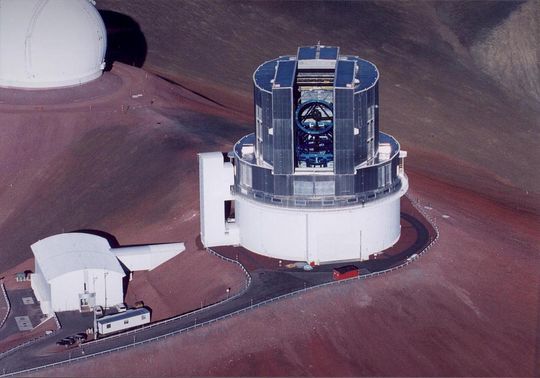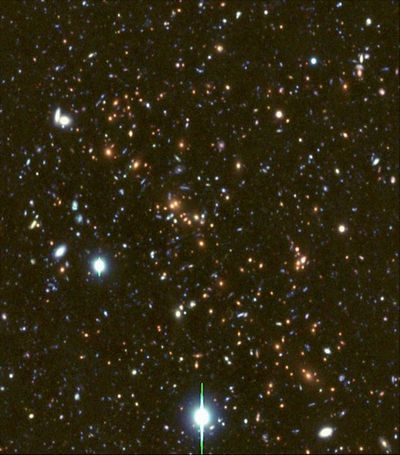
Elucidating the evolution of galaxies and the universe
We have two aims.
One is to elucidate how galaxies and clusters of galaxies formed and evolved into the shapes we see in the present-day Universe. The most direct approach to this problem is to investigate galaxies at different cosmic epochs (distances). We have been studying distant (past) galaxies mostly with the Subaru Telescope and nearby (present) galaxies using the large database constructed by the Sloan Digital Sky Survey. The Subaru prime focus camera, Suprime-Cam, which we developed in collaboration with members of the National Astronomical Observatory of Japan, is extremely effective in searching for distant galaxies and it has been a powerful tool in our research.
The other aim is to study energetic events such as supernovae and Active Galactic Nuclei (AGNs). These objects are so bright that we can measure their cosmological distances by quantifying their common properties. Then, we can measure the expansion speed of the Universe by comparing the distance and the redshift of these objects. As a result, we can probe the expansion history of the Universe. For example, distance measurements using type-Ia supernovae were the key to discovering the accelerating expansion of the Universe, for which the Nobel prize in physics was awarded in 2011. We are carrying out optical-infrared observations of supernovae and AGNs to deepen our understanding of the relevant physical processes, aiming at more accurate measurements of the cosmic expansion.
Hyper Suprime-Cam, whose field of view is seven times larger than that of Suprime-Cam, will become operational in 2014. A new multi-object spectrograph which can simultaneously take 2000 spectra is also planned. We will use these next-generation instruments as the key tools of our study. We are also developing unique instruments for one-meter class optical-infrared telescopes to carry out various kinds of observations to study supernovae, AGNs, and nearby galaxies. We have been working mainly in the optical and infrared regime, but interactions with other wavelengths will become more and more important.





